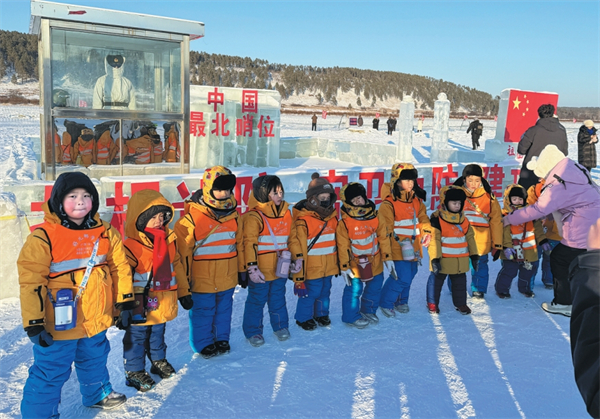Home>Harbin Today
NE China city welcomes summer vacationers
Updated : 2015-06-16
By Liu Sitong ( e.my399.com )
As the northernmost mega city in China, the city of Harbin and its many eco parks make it an ideal holiday destination in mid-June.
The riverfront city of Harbin was established in AD 1115 as the capital of the Jin Dynasty (AD 1115-1234).
The Songhua River runs through the city from east to west and creates several wetland ecosystems along its banks.
Hulanhe estuary wetland park
The Hulanhe estuary wetland park lies to the northeast of the city at the intersection of the Hulanhe and Songhua rivers. It is the largest park in Harbin and covers 38.5 square kilometers.
The park contains eight islands of different sizes and a large peninsula that juts out from the northern river bank. The peninsula and the islands are occupied by a service zone, aquatic amusement zone, bird sanctuary and lodging and dining quarter.

People windsurf on June 13 at the Hulanhe estuary wetland park in Harbin city, Heilongjiang province. [Photo/Liu Sitong]
Moon beach water world, the park’s latest attraction, is to be open on June 18. Facilities at the water world will include artificial waves, sliding boards, swimming pools and manmade rapids.
At the park people can watch wild aquatic birds, go windsurfing, ride a bike or just relax and enjoy the view from a boat. Beach sports facilities can also be found along the shores.

Two boats cruise the waterways on June 13 at the Hulanhe estuary wetland park in Harbin city, Heilongjiang province. [Photo/Liu Sitong]
The islands are connected by wooden bridges and electric boats are available to take tourists anywhere they want. The park is also camping-friendly.
Taiyangdao wetland park
The Taiyangdao park has been famous among locals since early 1900s when the Russians settled in the city. The park gained nationwide popularity in the 1980s following a hit song that depicts the beauty of it.
Jinhewan wetland park
Jinhewan park boasts a breathtaking view and houses a variety of ecologically important plants within its boundaries, including the Malus baccata and hawthorn.
The Songhua River originates from the Changbaishan Mountains in Jilin province and runs for 1434 kilometers. The river empties into the Heilongjiang River, which forms the boundary between China and Russia in Heilongjiang province. Several dams are built along the upper reaches of the Songhua River.

Harbin ramps up childcare services
A new comprehensive service center for childcare in Harbin is expected to be finished by the end of the year.
-
Talent policies drive enterprise development in Harbin
Harbin's "30 New Talent Policies" represents an iterative upgrade to the talent policy system, helping attract and retain talent to bolster economic and social development.
-
Official website of 2025 Asian Winter Games goes live
Harbin, the host city of the 9th Asian Winter Games, has announced that the official website for the 2025 event has recently gone live.
-
Harbin launches measures to facilitate more foreign trade
In the first three quarters of 2023, the total import and export value of Heilongjiang province's goods trade hit 218.22 billion yuan.





